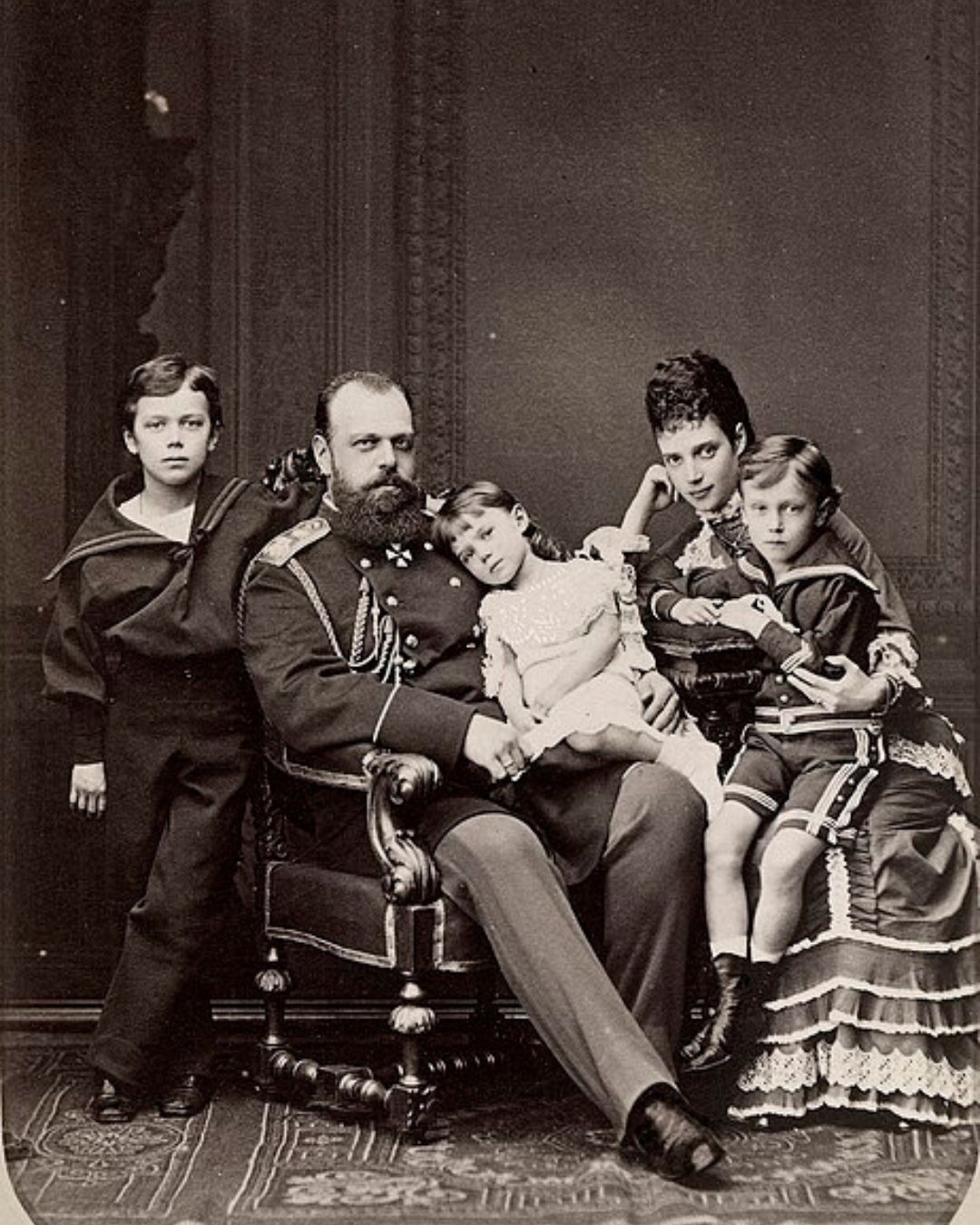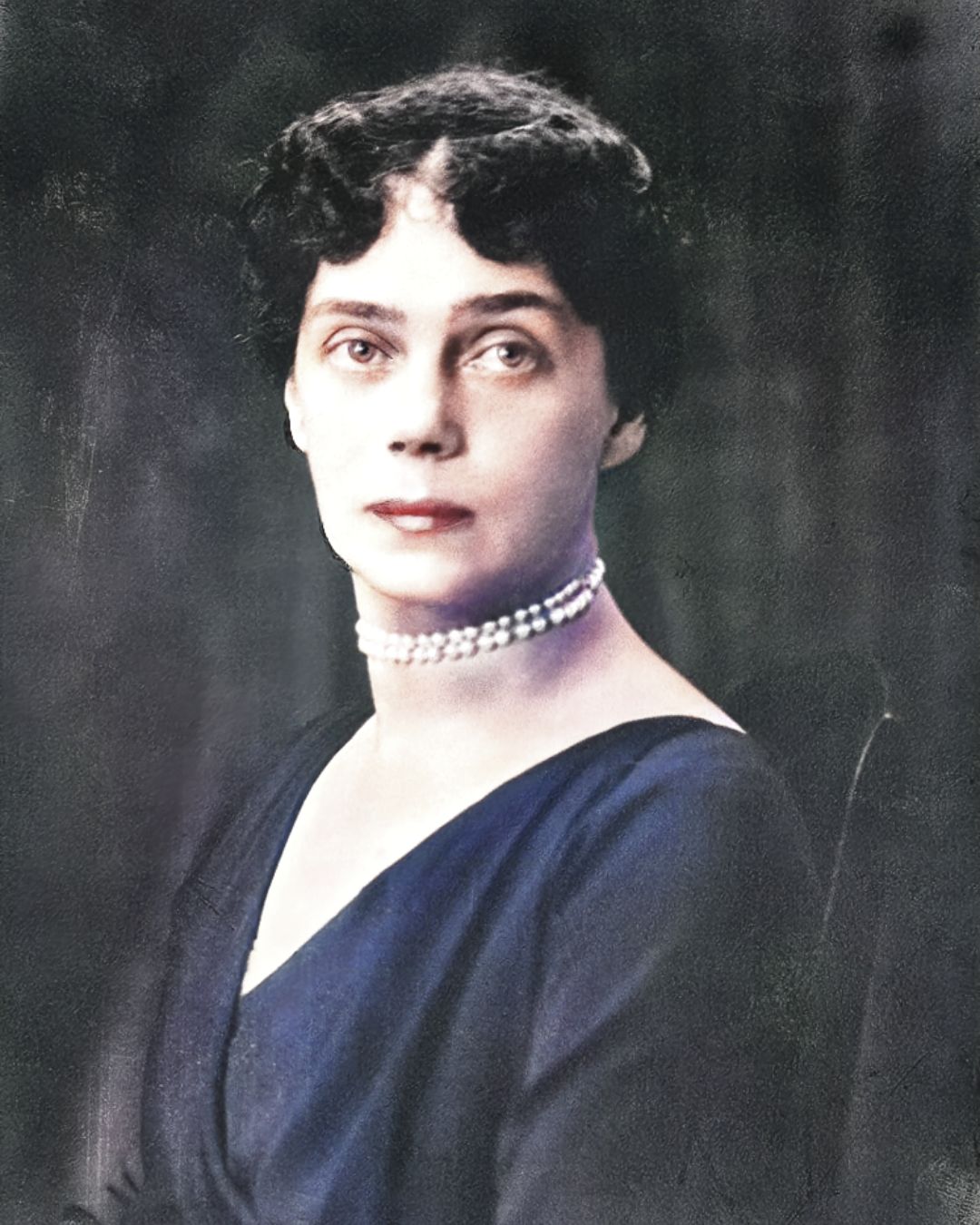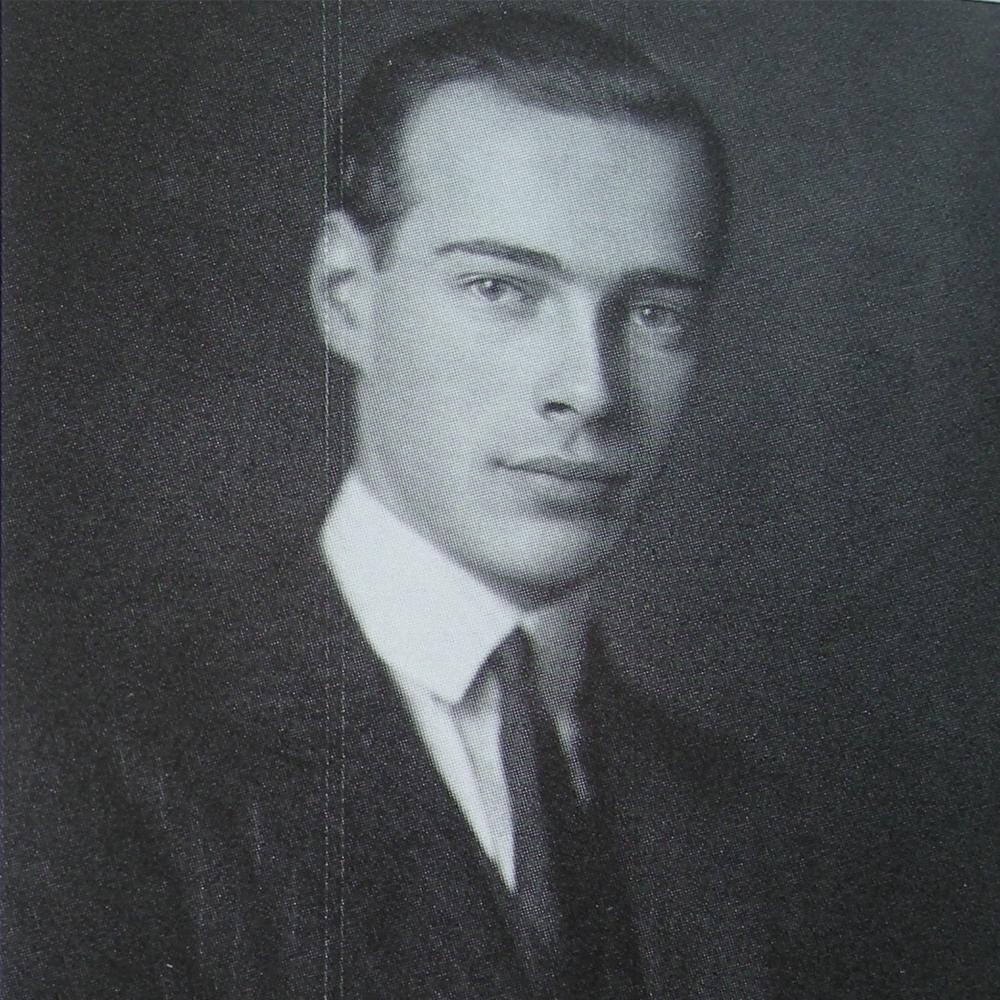
Emigration of the Romanovs to Great Britain: the story of Grand Duchess Xenia
The Russian Revolution of 1917 set in motion a series of unpredictable events, which forever changed the lives of members of the Russian imperial family, some of whom emigrated to Europe, where their numerous descendants still reside. This was the fate of the sister of Emperor Nicholas II — Grand Duchess Xenia Alexandrovna of Russia. In 1919, on the British warship HMS Marlborough she and her children left Russia forever to build a new life on the shores of Great Britain. Afisha.London magazine chronicles Grand Duchess Xenia’s life in exile and reveals where she lived in London, what happened to the imperial jewels she brought from Russia, as well as where one can now meet the descendants of the Romanov dynasty.
Grand Duchess Xenia is one of the most beautiful and charming representatives of the Romanov family. Her son-in-law, Prince Felix Yusupov, recalled in his memoirs the fresh scent of her lily of the valley perfume and spoke with reverence of the famous mother-in-law: “Her greatest virtue — personal charm — she inherited from her mother, Empress Maria Feodorovna. The look of her wondrous eyes penetrated into the soul, her grace, kindness and modesty conquered everyone.” In a marriage with Grand Duke Alexander Mikhailovich of Russia, Xenia had seven children, all of whom also emigrated to Europe after the Revolution and formed their own families.
A successful but unhappy marriage
Xenia was born into the royal family on April 6, 1875. Her parents were Emperor Alexander III and Empress Maria Feodorovna, while her brother was the tragically famous future emperor, Nicholas II. Ever since she was young, Xenia had been in love with Nikolai’s best friend — Grand Duke Alexander, or simply Sandro, who was her great-uncle. The young duke often came to Gatchina, where the imperial family preferred to live, and was friends with Xenia’s brothers. Alexander was very handsome, educated and smart: in the future, he would develop a successful program to strengthen the Russian fleet in the Pacific, become an admiral and play an important role in the formation of Russian aviation. However, his wedding with Xenia was preceded by a conflict — her parents and, in particular, the emperor himself, were against the union of their daughter with a relative. Nevertheless, the young duchess insisted on her choice, and in the summer of 1894, the wedding Xenia so desired finally took place in Peterhof.
- Empress Maria Feodorovna with her daughter, Grand Duchess Xenia Alexandrovna. Photo: Charles Bergamasco, Public domain, via Wikimedia Commons
- Alexander III of Russia with Empress Maria Feodorovna and their children — Tsarevich Nikolai, Grand Duchess Xenia and Grand Duke George (1870s). Photo: Sergey Lvovich Levitsky, Public domain, via Wikimedia Commons
Eyewitnesses of those events described Alexander’s feelings towards Xenia as “restrained”, while modern historians tend to consider their marriage unhappy. The enamoured duchess completely dissolved in her husband and his interests, and ceased to be the challenge the gambling duke was so attracted to. After some time, Sandro became unfaithful to his wife, and their relationship began to take on a free character; although, at the insistence of Xenia, the couple did not officially divorce.
However, their marriage turned out to be fertile and even fateful — the couple had seven children. They had six sons: Andrei, Rostislav, Nikita, Feodor, Dmitry and Vasily, who lived interesting and long lives in emigration, while their only daughter Irina later married the infamous Felix Yusupov and became a trendsetter in Paris. Most of the descendants of the Romanovs living today are the great-great-grandchildren of Xenia and Alexander.

Grand Duke Alexander Mikhailovich of Russia and his wife Grand Duchess Xenia Alexandrovna. Photo: Alexander Palace forums, Public domain, via Wikimedia Commons
Emigration to the United Kingdom and the “diamond scandal”
The grand duchess tried to compensate for the failure in love by taking care of those around her. During the First World War, Xenia organised an ambulance train for those injured in battle, all the while in Petrograd she created a hospital for wounded soldiers, which she managed herself. After the 1917 Revolution, she with her children and mother, the dowager empress, fled to Alexander’s family estate Ai-Todor in Crimea, although their time there could not be called comfortable — the members of the royal family were closely watched. In 1919, King George V of England sent the British warship HMS Marlborough for his aunt Maria Feodorovna. Then the dowager empress made sure that the entire Russian aristocracy imprisoned in Crimea was also taken on board. On her way to Europe, 44-year-old Xenia wrote in her diary: “It’s over. The most terrible thing, which even hurts to think about, happened — we left the Motherland. Now we are real refugees, homeless.” However, 40 years of eventful life and the patronage of the British monarchy awaited her.
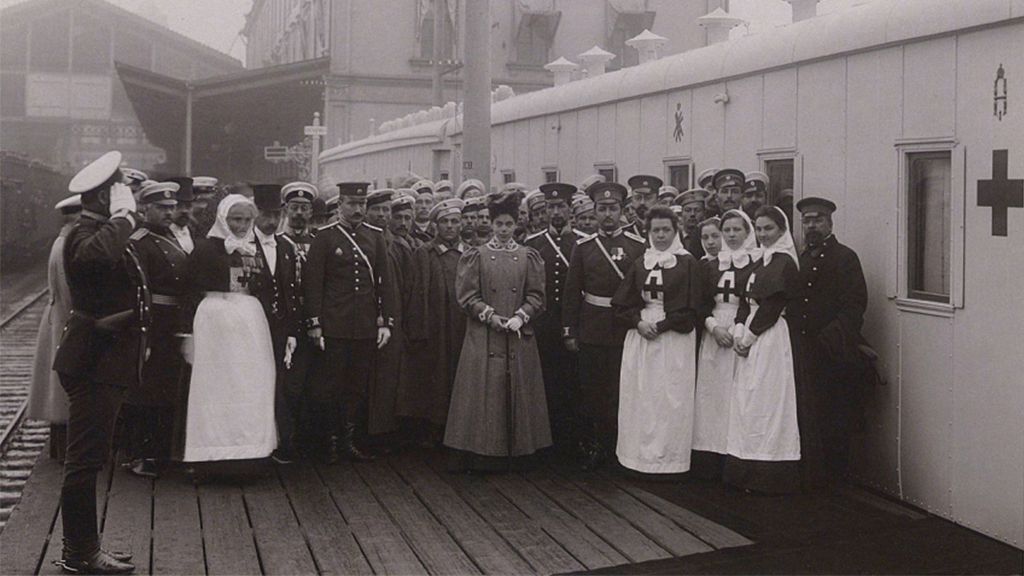
Grand Duchess Xenia Alexandrovna of Russia with the crew of her ambulance train. Photo: Karl Bulla, Public domain, via Wikimedia Commons
The overloaded ship brought Maria Feodorovna, Xenia and her six children, as well as other relatives of the royal family to Europe. Sandro, together with his eldest son, left Crimea on a British destroyer in 1918, headed to Paris to negotiate with the allies of the royal family, where he later settled. In emigration, the couple lived separately — for a time, Xenia remained next to her mother and sister in Denmark, but in 1925 the difficult financial situation forced the grand duchess to move to Britain.
Read more: Yehudi Menuhin in London: prodigy, violinist and goodwill ambassador
Even selling the jewellery exported from Russia, which left Xenia with negligibly little money, did not help to replenish her finances. George V, to whom Xenia was a cousin, gave her and her family a new home — Frogmore Cottage in Windsor Park, where she lived until 1937. Today, this country estate, built in the 1680s, is included in the National Heritage List for England. Queen Elizabeth II once mentioned this residence, noting that it has a “special relaxing atmosphere.”
- Grand Duchess Xenia Alexandrovna of Russia, before World War (1910s). Photo: No author given, Public domain, via Wikimedia Commons (colour correction by Afisha.London)
- Xenia Alexandrovna, 1925. Photo: AnonymousUnknown author, Public domain, via Wikimedia Commons (colour correction by Afisha.London)
In 1928, Maria Feodorovna died, leaving Xenia and her sister, Grand Duchess Olga, a fortune — a box with rare jewellery, which contained brooches, tiaras and Fabergé Easter eggs. In emigration, the empress did not sell any of her jewellery, so already during her lifetime, a real hunt for the box began. After her death, it was secretly brought from Denmark to London and opened at Windsor Castle in the presence of Xenia. The invited jeweller tentatively estimated its contents at £100 thousand, although their total cost was at least £700 thousand, which, referring to the current exchange rate, is approximately £12 million. The British royal court agreed to buy some of the jewels — the most beautiful of them went to the wife of George V and the passionate lover of jewellery Mary of Teck, who later bequeathed them to her granddaughter, Elizabeth II. However, the jewellery of the Romanovs more than once excited the public, from time to time appearing on famous British aristocrats.

Duchess’s casket, 1894. Photo: (c) 1996-2024 Museum.ru
In the 1960s, a whole “diamond scandal” unfolded, which was picked up by European and Canadian newspapers. It turned out that only a small part of the declared amount was deposited into the accounts of the Russian duchesses — with this money Grand Duchess Olga was only able to buy a small house in Denmark and lived quite poorly. Historians have tried many times to make sense of this almost detective story. Olga’s son, politician Gury Kulikovsky, came to a conclusion that part of the empress’s jewellery could go towards paying a pension of £10 thousand annually, which George V allocated to Maria Feodorovna while she lived in Denmark. In addition, the imperial and other treasures that poured into Europe after the mass emigration of the Russian nobility in the late 1910s were deliberately bought by jewellers for next to nothing.
Life at Hampton Court and heirs
After the death of George V, Xenia moved to Wilderness House, which was given to her by King Edward VIII in 1937. This small mansion is located on the grounds of the former royal residence of the 16th century — the majestic Hampton Court palace in London. Here the grand duchess regularly tried to gather all her many children and grandchildren. At Hampton Court, together with Xenia, also lived her son Andrei with his wife Elizabeth and their two children. In Great Britain, he was considered a good artist and made paintings for sale, but when Andrei’s wife was killed in a military air raid on Hampton Court in October 1940, he, his mother and his children moved to the much safer Scotland. There he later met his second wife, the Englishwoman Nadine McDougall.
- Xenia Alexandrovna at Wilderness House with her grandson Prince Alexander, Princess Margarita of Baden and a young Princess Olga (1950s). Photo: © Historic Royal Palaces Collection
- Xenia Alexandrovna at Hampton Court. with Archbishop Nestor Ansimov of Kamchatka at Hampton Court (May 1938). Photo: Sophia Goodman, rocorstudies.org
After the war, Grand Duchess Xenia returned to Hampton Court, while the newlyweds settled in the medieval Provender House in Kent, which was acquired by Nadine’s grandmother in 1914. In 1950, the couple had a daughter, Olga, who inherited the noble title of Princess Romanova. Now Olga is the only owner of the old estate, the walls of which are decorated with family portraits and other relics of the Romanov dynasty. In collaboration with British architect Ptolemy Dean, Olga is engaged in the restoration of the house and gives tours around it, telling the story of her family. Interestingly, the princess does not speak Russian.
A descendant of another son of Xenia, Rostislav, also lives in England. After the emigration of the Romanovs to Europe, Rostislav, together with his beloved, left for Chicago and laid the foundation for a whole dynasty of Rostislavs. Artist and designer, Rostislav Rostislavovich, born in 1985, lives in East Sussex and is vice president of the Romanov Family Association. He participates in conferences and examinations as the official representative of the Romanovs in Russia and London. In 2019, the prince married an Englishwoman of Greek origin, Foteini Georganta. The couple is raising a son, whose name, of course, is also Rostislav.
- Prince Rostislav Alexandrovich of Russia. Photo: Jacques Ferrand collection, Public domain, via Wikimedia Commons
- Prince Rostislav Rostislavovich Romanov (born 1985). Photo: © Dominic Buten/TASS
Read more: Emmeline Pankhurst in St. Petersburg: the suffragette movement in Britain and Russia
Grand Duchess Xenia’s heirs
The rest of Xenia’s sons have dispersed all over the world: the descendants of Prince Feodor live in Spain, while the heirs of Prince Vasily — in Colorado, USA. Prince Nikita, like his brother Dmitry, settled in Paris, but sometimes came to visit his mother in Hampton Court. Xenia was also constantly visited by her only daughter Irina, who, together with her husband Felix Yusupov, as well found a home in the French capital.
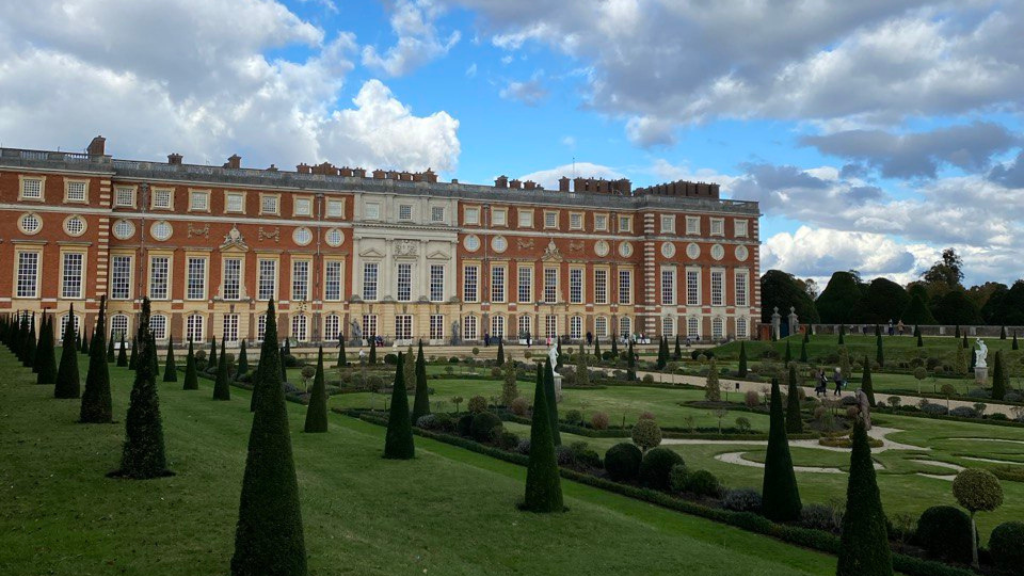
Hampton Court. Photo: Afisha.London
The fate of this branch of the Romanov dynasty is particularly interesting. The daughter of the Yusupovs, Irina (also known as Bébé), married Count Sheremetev and moved to Rome and then to Athens. Her daughter, Countess Xenia Nikolaevna Sheremeteva-Sfiri (born in 1942), named after her great-grandmother, is a descendant of the most distinguished noble families of imperial Russia. She was among those Romanovs who took a DNA test for the examination of the remains of the royal family. Despite her husband’s Greek surname and her maiden name, in Russia Xenia is considered Yusupova. In 2000, the countess acquired Russian citizenship, she also visited St. Petersburg many times, which, according to her, is a city she loves very much. In 1968, Xenia’s daughter Tatiana was born — she works in modelling in Monaco and Paris and is raising two daughters.
Returning to their famous ancestor, Grand Duchess Xenia, it is worth saying that she lived with dignity in her last years. Daughter Irina and son Andrei were with their 85-year-old mother in Hampton Court when she fell ill with pneumonia and died, having outlived her husband by a little less than 30 years. In emigration, Xenia maintained a warm relationship with Sandro, and even at a distance they supported each other. According to her dying will, the body of the grand duchess was transported to the south of France and on April 29, 1960, she was buried at the Roquebrune cemetery next to her unhappy and only love — her husband Alexander Mikhailovich.
Irina Latsio/Margarita Bagrova
Cover photo: Afisha.London / Midjourney
Read more:
Boarding the myths: how London is reconsidering pirates
SUBSCRIBE
Receive our digest once a week with quality Russian events and articles


